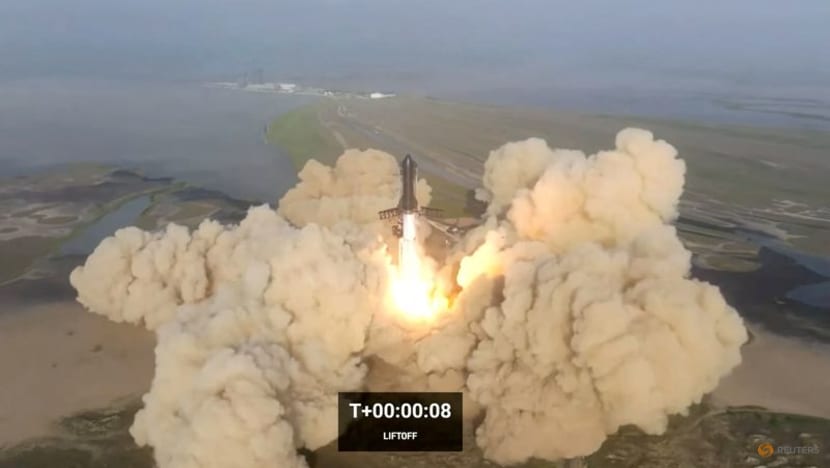On April 20th, 2023, SpaceX, the space exploration company founded by billionaire entrepreneur Elon Musk, successfully launched the first flight of its Starship rocket system. The historic launch took place at the SpaceX launch site in Boca Chica, Texas, and marks a significant milestone for both SpaceX and the future of space exploration. In this article, we will explore the details of this groundbreaking launch and what it means for the future of space travel.
The Starship Rocket System
Overview of the Starship Rocket System
The Starship rocket system is a fully reusable launch vehicle that is designed to transport crew and cargo to Earth orbit, the Moon, Mars, and beyond. The system consists of two main components: the Super Heavy booster and the Starship spacecraft. The Super Heavy booster is a massive rocket that provides the initial thrust to get the Starship spacecraft off the ground, while the Starship spacecraft is the crew and cargo transport vehicle that can be used for a variety of missions.
Development of the Starship Rocket System
The development of the Starship rocket system began in 2012 when Elon Musk first announced the concept of the Interplanetary Transport System (ITS). Over the years, the design of the system has gone through several iterations, with the latest version featuring a stainless steel construction and advanced propulsion systems.
The Debut Flight
The debut flight of the Starship rocket system was a major milestone for SpaceX and the future of space exploration. The launch took place on April 20th, 2023, at the SpaceX launch site in Boca Chica, Texas. The Starship spacecraft was launched atop the Super Heavy booster and successfully reached Earth orbit. The spacecraft then remained in orbit for several hours before returning to Earth for a controlled landing.
Implications for the Future of Space Travel
Advancements in Reusable Rocket Technology
One of the biggest implications of the successful launch of the Starship rocket system is the advancement of reusable rocket technology. The ability to reuse rockets significantly reduces the cost of space travel and opens up new possibilities for exploration.
The Potential for Interplanetary Travel
The Starship rocket system is designed to transport crew and cargo to Mars and beyond. The success of the debut flight brings us one step closer to achieving this goal and opens up new possibilities for interplanetary travel and exploration.
Commercial Opportunities in Space
The success of SpaceX and the Starship rocket system also opens up new commercial opportunities in space. With the ability to transport crew and cargo to space at a lower cost, companies can explore new business opportunities in space, such as space tourism and asteroid mining.
Conclusion
The debut flight of the Starship rocket system is a historic milestone for SpaceX and the future of space exploration. The success of the launch brings us one step closer to achieving Elon Musk's vision of making life multiplanetary and opens up new possibilities for interplanetary travel and exploration. With advancements in reusable rocket technology and the potential for commercial opportunities in space, the future of space travel is looking brighter than ever before.
FAQs
Q1. What is the Starship rocket system?
The Starship rocket system is a fully reusable launch vehicle that is designed to transport crew and cargo to Earth orbit, the Moon, Mars, and beyond.
Q2. Who developed the Starship rocket system?
The Starship rocket system was developed by SpaceX, the space exploration company founded by billionaire entrepreneur Elon Musk.

